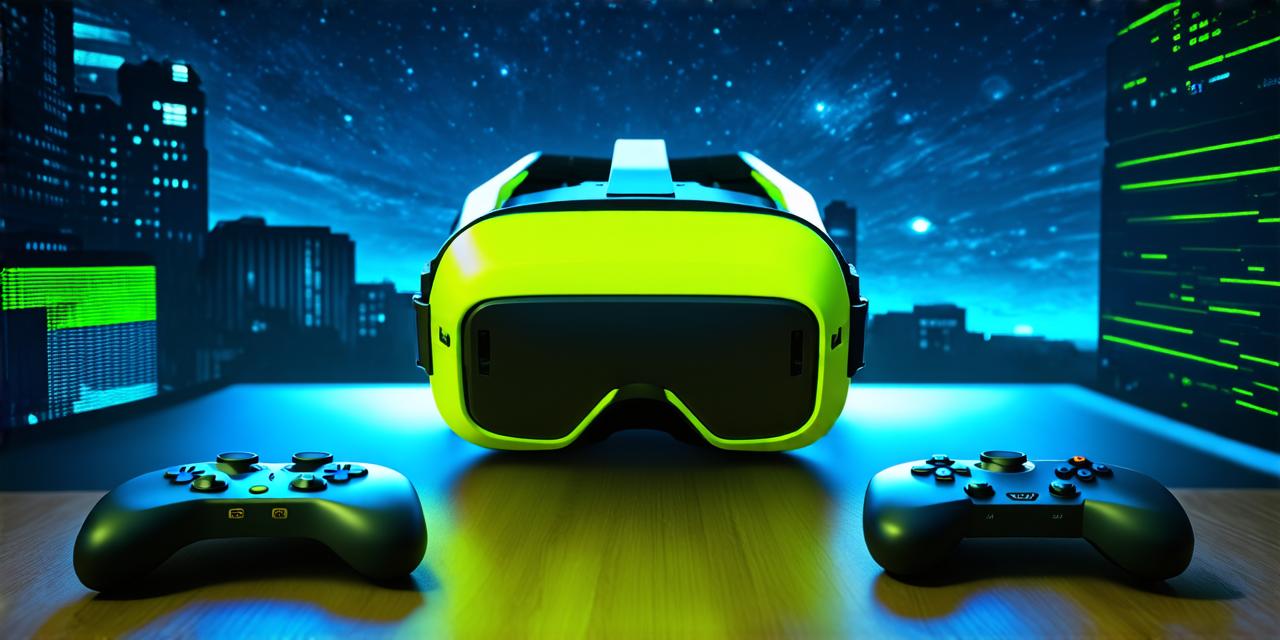The Main Components of VR Equipment
- Headset: The headset is the most important piece of equipment when it comes to playing VR games. It sits on your head and displays a 3D image that blocks out the real world, creating the illusion of being in another environment. There are several different types of VR headsets available, including the Oculus Rift, HTC Vive, and PlayStation VR.
- Computer: A powerful computer is required to run most VR games. The computer needs to have a high-end graphics card, sufficient RAM, and a fast processor to ensure smooth gameplay. Some VR headsets come with their own built-in computers, but for the best performance, you’ll want to use a separate gaming PC.
- Motion controllers: Motion controllers track your movements in real-time, allowing you to interact with virtual objects and environments. They typically consist of two handheld devices that you wear on your wrists and use to point, grab, and manipulate virtual objects. The most popular motion controllers for VR gaming are the Oculus Touch and HTC Vive Pro Controller.
- Game library: There are currently thousands of VR games available, ranging from first-person shooters and puzzle games to educational experiences and simulation games. You’ll need a computer with enough storage space to download and install these games.
Setting Up Your VR Equipment
- Install the headset software: Each VR headset requires its own software installation. This software allows you to connect your headset to your computer, calibrate the tracking sensors, and adjust the settings for your specific headset model.
- Connect the motion controllers: Motion controllers typically connect to your computer via Bluetooth or a USB cable. You’ll need to pair the motion controllers with your computer and ensure they’re properly calibrated before you can start playing games.
- Adjust the headset settings: Once your headset is connected to your computer, you’ll need to adjust the settings for your specific headset model. This includes setting up the resolution, field of view, and other display options.
- Choose a game and download it: Once everything is set up, you can choose a VR game to play. You can either download games directly from the game store or use a VR launcher like Oculus Home or SteamVR.
The Future of VR Equipment
As VR technology continues to evolve, we can expect to see new and innovative equipment releases in the future. For example, some VR companies are developing wireless motion controllers that eliminate the need for cables. Others are working on more advanced headsets with higher resolutions and wider fields of view.
The Importance of Comfort in VR Equipment
When it comes to playing VR games, comfort is key. You’ll be spending several hours wearing your headset and using motion controllers, so it’s important that they’re comfortable and easy to use. Some VR headsets come with adjustable settings that allow you to customize the fit and reduce eye strain. Motion controllers should also be designed to fit comfortably in your hands without causing discomfort or fatigue.
The Benefits of Using VR Equipment
Playing VR games can provide numerous benefits, including:
- Increased immersion: VR games create a truly immersive experience that transports you to another world. This can be particularly useful for educational and simulation-based games where you need to experience a specific environment or scenario.
- Improved hand-eye coordination: VR games require you to use your hands and fingers in conjunction with your eyes, which can help improve your hand-eye coordination over time.
- Reduced stress and anxiety: Many VR games are designed to be relaxing and calming, making them a great way to unwind and reduce stress and anxiety levels.
- Enhanced social experiences: VR games can be played with friends or family members in the same room, allowing you to share a unique and immersive gaming experience together.
Summary
In conclusion, playing virtual reality games requires several pieces of equipment, including a headset, computer, motion controllers, and game library. Setting up your equipment is relatively straightforward, but it’s important to make sure everything is properly calibrated and adjusted for the best possible experience. As VR technology continues to evolve, we can expect to see new and innovative equipment releases in the future. Overall, the benefits of using VR equipment are numerous, including increased immersion, improved hand-eye coordination, reduced stress and anxiety, and enhanced social experiences.
